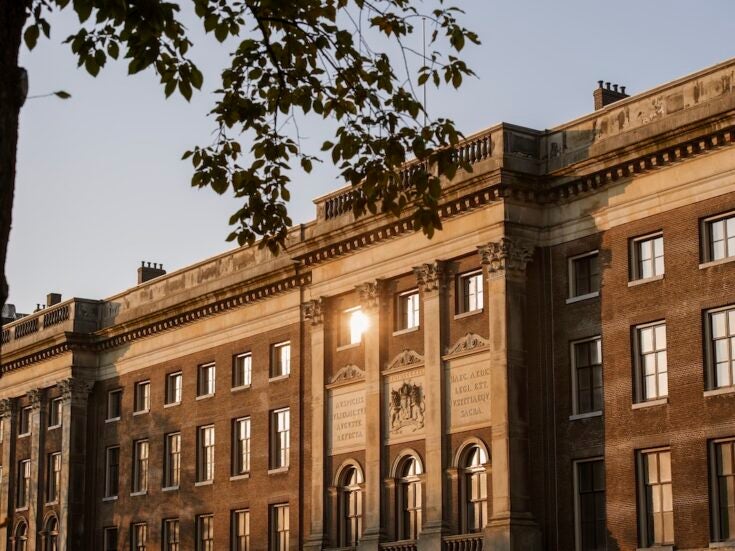
The co-founder of start-up Vastari says collectors and museums are embracing art-tech, writes Arun Kakar
‘I primarily buy art to show it off,’ Charles Saatchi once said. The history of public museums is intertwined with the history of private collecting, with Saatchi belonging in a tradition of public institutions shaped by the inventories of history’s most prominent collectors.
It’s a relationship that start-up Vastari is looking to bring into the digital age. Founded in 2012 by Bernadine Bröcker Wieder and Francesca Polo, the start-up is premised on delivering efficiency: the platform connects curators, collectors, exhibition producers and galleries to facilitate collaborations on exhibition loans in a single, streamlined process.
‘It just seemed really inefficient to have people wasting so much time on bringing the content together,’ Bröcker Wieder explains to Spear’s on the phone.
Coming from a commercial art background, Bröcker Wieder often found herself at the coal-face of the problems that resulted when trying to trace selected works. ‘Sometimes you spend months trying to find that owner, and then you speak to all the different people until you finally get to the owner and they actually don’t want to lend,’ she recalls.
Vastari – named after renaissance writer Giorgio Vasari – allows collectors to list their works on the platform with maximum privacy. Not only is the platform only available to members, the identity of a piece’s owners is kept anonymous too, meaning that two separate works owned by the same collector will be indistinguishable from one another. ‘We don’t store any personal information about the collectors on our platform; it’s all on a completely different server, adds Bröcker Wieder.
The benefits to a collector of having their work exhibited are still the same: works in museums appreciate in value and exhibitions affect the trajectories of artists. It’s a fixture that has intensified as the art world has become increasingly global and the internet offers new ways of being seen. Vastari aims to harness this by centralising collector and exhibitors into a single hub to simplify the process.
‘Sometimes [exhibitors] come to us and they are planning an exhibition about money or mythology or an exhibition about sustainability and then they’re open to suggestions,’ says Bröcker Wieder. ‘This means the collector can take a proactive role in making sure that [their piece of art] is involved in the conversation.’
This can be particularly important in ‘diversifying the canon’, which Bröcker Wieder cites as a key tenant of the Vastari brand. She recalls an exhibition in Rome, which was composed mainly of ‘white European artists’ before Vastari suggested the inclusion of a work by Nelson Mandela. ‘All of a sudden it bought an African-perspective to an exhibition that was actually quite euro-centric,’ Bröcker Wieder recalls.
Things are moving quickly at Vastari. In seven short years, its network now numbers over 8,000 member institutions as well as a fast-growing base of collectors. It launched its VTEN platform in 2014 to cover travelling exhibitions, an area which is fast growing in demand. According to its own research conducted last October form over 500 Museums worldwide, demand for travelling exhibitions is increasingly high. Some 38.5 per cent of institutions said that fine art show, the most popular from the other categories including science, history and culture/society.
As well as growing these segments of the business, Bröcker Wieder says that the immediate aim for Vastari is ‘expanding the market’ into the private sphere. This isn’t just limited to gallery spaces but places that’ might want to have art in their properties’, such as shopping malls.
‘Art-tech’ firms like Vastari are often tasked with transforming an industry notoriously resistant to technological change. ‘Scaling up is a lot slower than Silicon Valley standards,’ laughs Bröcker Wieder before noting that the company has attracted interest from venture capital.
She adds: ‘Our question is whether it makes sense in terms in our scaling to invest, or to do it at our speed because our industry is so slow. We are exploring whether the market is ready for us to continue.’
While Bröcker Wieder is conscious of the climate that Vastari’s immediate aims fall against, her vision of a technologically-embedded museum experience hints at a much larger ambition underlying the company’s strategy.
‘In my mind, one day you will have sensors within an exhibition where you can tell what the most popular work is and you pay a return to the collectors,’ she says. It’s a very ‘egalitarian’ way of looking at value ‘in terms of eyeballs’ that the firm has the technology to do, she claims. ‘We’re very much waiting to see how the industry reacts.’
That day might come with the growing number of younger, digitally-enabled collectors who are entering the market. As well as bringing a native tech-savviness into the market, Bröcker Wieder has also noticed that younger collector bringing a new set of concerns to the fore.
‘Younger collectors are really passionate about changing transparency in the market,’ Bröcker Wieder says. ‘We organised an event on blockchain in at Christie’s in July and we saw that the demographic that are passionate about that kind of transparency and potentially tokenising artworks [..] are very attractive to everyone under 40.’
It is this bracket that’s slowly beginning to shape this age-old relationship between collector and institution in time, Bröcker Wieder says. By the soundsof things, Vastari is well equipped to capitalise on and facilitate this latency when it happens. She adds: ‘These are almost happening under the radar, not in the headlines of all the auctions that are happening.’
Arun Kakar writes for Spear’s
Image credit: Copyright Jennifer Moyes








